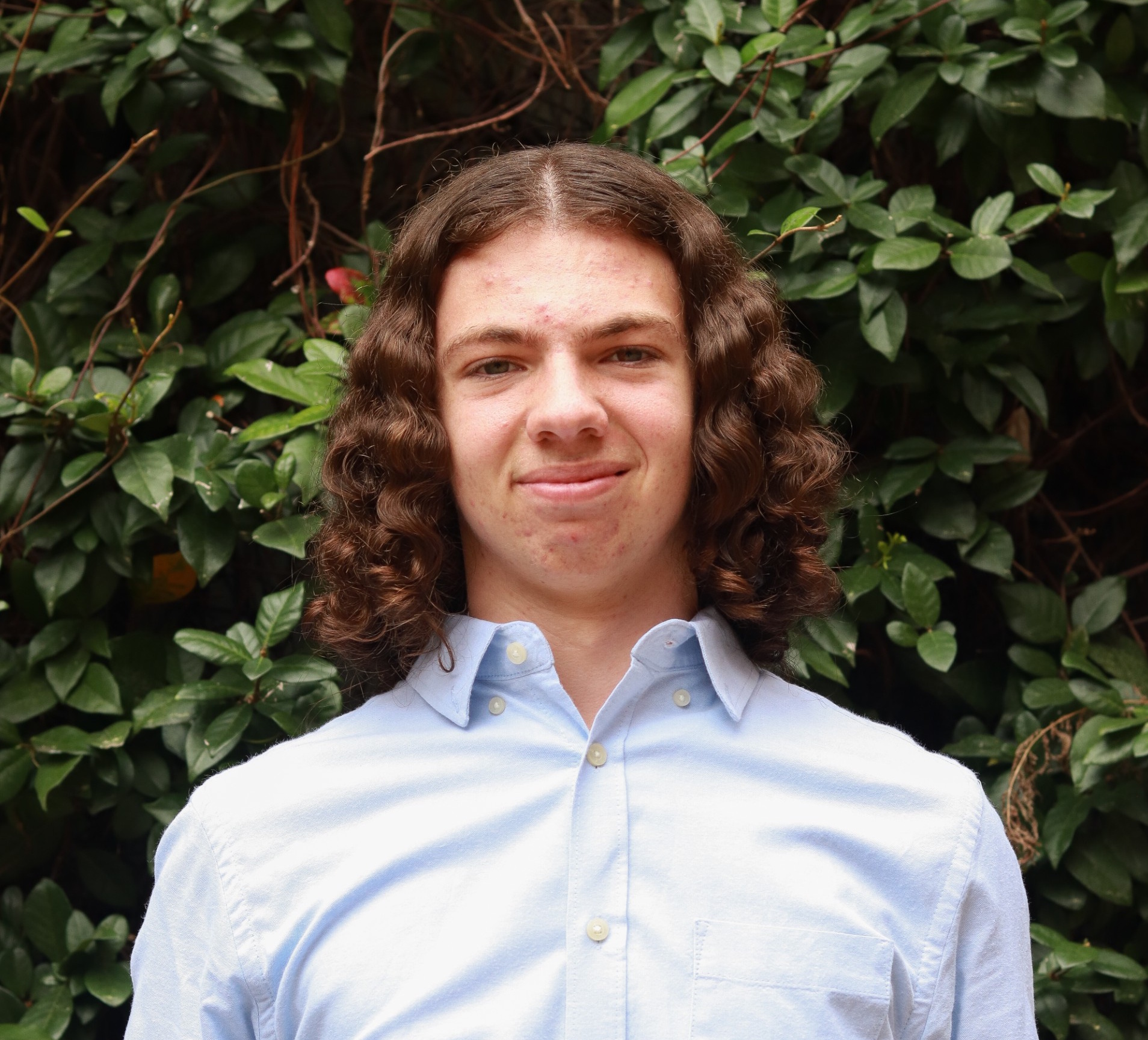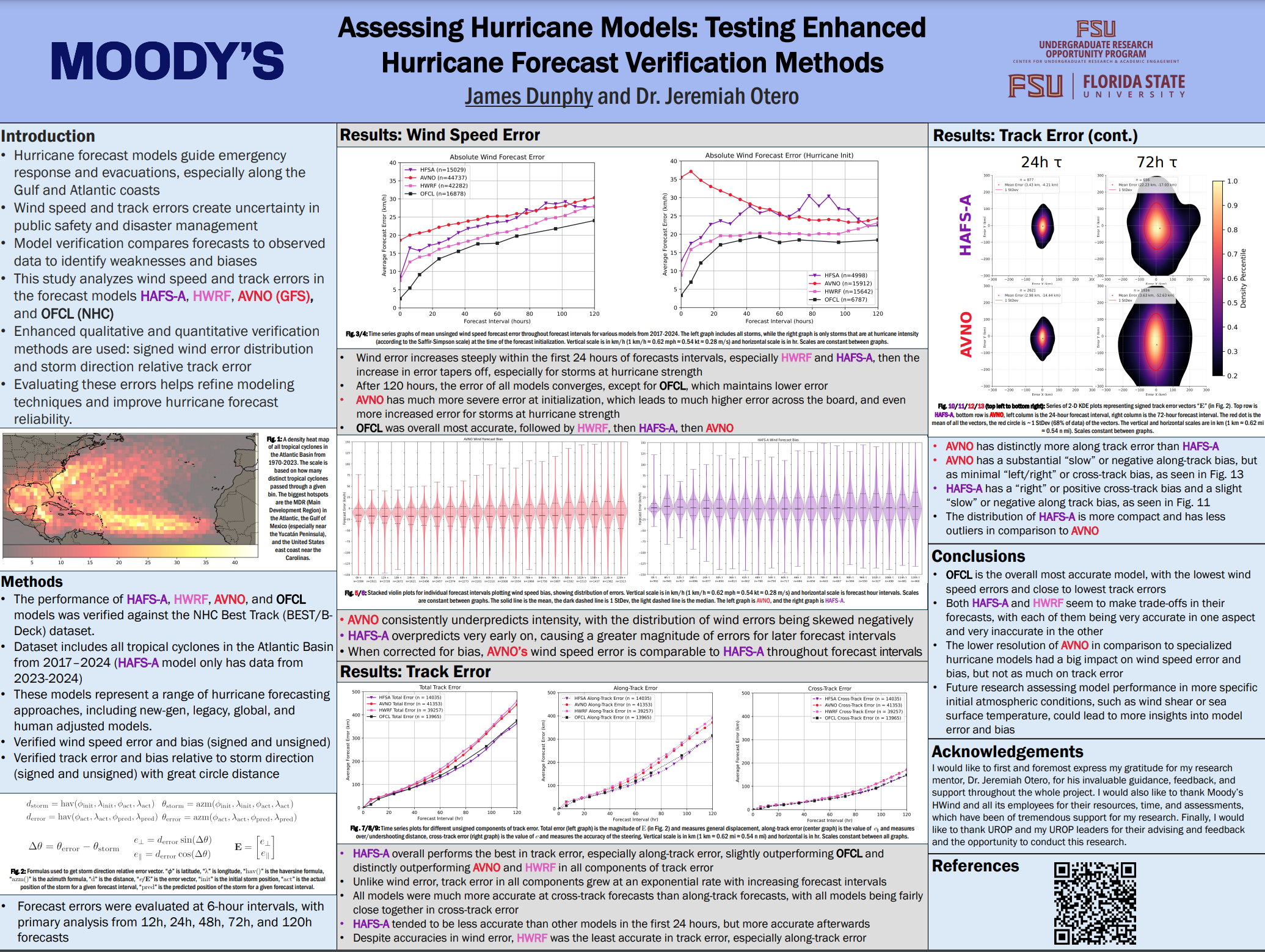Research Symposium
25th annual Undergraduate Research Symposium, April 1, 2025
James Dunphy Poster Session 4: 3:00 pm - 4:00 pm/ Poster #108

BIO
James Dunphy is a freshman Presidential Scholar at Florida State University, majoring in Meteorology and Computational Science. Originally from Tampa, FL, he is passionate about advancing hurricane forecast modeling, particularly in the Atlantic basin. His research experience includes an internship with Moody’s RMS H-Wind and ongoing opportunities at Florida State, where he has applied his skills in Python programming and data analysis to hurricane model verification. James plans to pursue a Ph.D. in Meteorology with the goal of contributing to the field through academia or a role in the government sector. Outside of academics, he co-directs a youth orchestra in Tampa that performs during the holidays.
Assessing Hurricane Models: Testing Enhanced Hurricane Forecast Verification Methods
Authors: James Dunphy, Jeremiah OteroStudent Major: Meteorology and Computational Science
Mentor: Jeremiah Otero
Mentor's Department: N/A Mentor's College: N/A (Moody's HWind) Co-Presenters:
Abstract
Accurate hurricane forecasts are essential for public safety and disaster preparedness. This research evaluates the performance of forecast models, including HAFS-A (Hurricane Analysis and Forecast System), ANVO (a.k.a. GFS, Global Forecast System), HWRF (Hurricane Weather Research and Forecasting Modeling System), and OFCL (a.k.a. NHC, National Hurricane Center Forecasts), from 2017-2024, analyzing wind speed and storm direction predictions. The datasets used include NOAA’s (National Oceanic and Atmospheric Administration) A-deck and B-deck archives, which contain historical hurricane forecast model outputs and observed hurricane positions, respectively. Using this, relative and absolute wind speed errors were examined at 6-hour forecast intervals along the entire lifespan of tropical cyclones from 2017–2024. Additionally, track error was analyzed relative to storm direction. As a result, biases in overshooting/undershooting distance and steering can be diagnosed separately.
Results show that wind speed error grew rapidly in the first 24 hours, then tapered off at a stable rate of increase afterward. High-resolution legacy and human adjusted models, such as HWRF and OFCL, had lower wind error, but after 120 hours, the error of all the models converged. Newer generation and human adjusted models, such as HAFS-A and OFCL, consistently had the lowest magnitude of track error. All models tended to have higher speed error than directional error, and all models tended to undershoot storm speed. These findings provide valuable insights into comparisons of different model performance over time. Understanding error trends will help in refining hurricane prediction techniques, ultimately enhancing emergency preparedness and response strategies.
Keywords: Meteorology, Hurricanes, Forecast Verification


